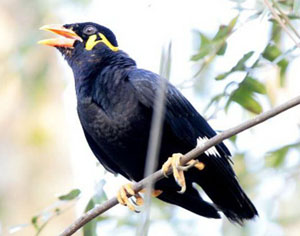
Gracula religiosa
Gracula religiosa,Common Hill Myna,, Qinjile, Jiugong bird, Hainan myna, Hainan starling, Indian grek
The characteristic of the myna is the orange-yellow wattles and hems on the ···
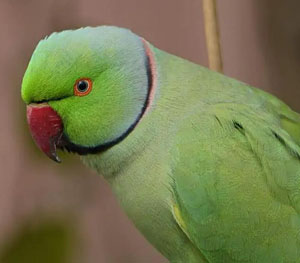
Psittacula krameri
Psittacula krameri,Rose-ringed Parakeet,Rose-ringed parakeet, Ring-necked parakeet, Moon-ringed parakeet
Red-collared green parrots are resident birds, often moving in groups, somet···
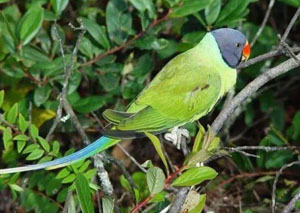
Psittacula himalayana
Psittacula himalayana,Slaty-headed Parakeet
The appearance of the Green-headed Parrot is very similar to that of the Gre···
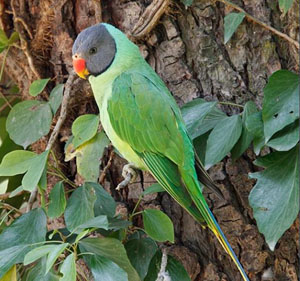
Psittacula himalayana
Psittacula himalayana,Slaty-headed Parakeet,Gray-headed parrot, Sand monk bird, Gray-headed conure, Dark-headed parrot
Gray-headed parrots are typical climbing birds with opposable feet, two toes···

Neofelis nebulosa
Neofelis nebulosa,Clouded Leopard , Panthère longibande, Panthère nébuleuse, Pantera Longibanda, Pantera Nebulosa, Pantera del Himalaya , Kla PorPok , Seua lai mek,Clouded leopard, tortoise-patterned
The clouded leopard is called Clouded Leopard in English, and there are 3 su···

Pardofelis temminckii
Pardofelis temminckii,Asiatic Golden Cat, Golden Cat, Temminck's Cat ,Chat de Temminck, Chat doré d'Asie, Gato Dorado Asiático ,Asiatische Goldkatze,Asian golden cat, original cat, red leopa
The Asiatic Golden Cat is a medium-sized cat with three subspecies.Except fo···

Psittacula roseata
Psittacula roseata,Blossom-headed Parakeet,Rose-headed cockatoo, Purple-headed cockatoo
The flower-headed parrot is a medium-sized bird, a typical climbing bird, wi···
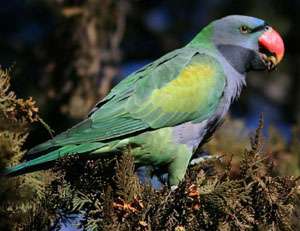
Derby's Parakeet
Derby's Parakeet,Parrot, Oriole
The Great Purple-breasted Parrot is a medium-sized bird. In the wild, it usu···

Psittacula alexandri
Psittacula alexandri,Red-breasted Parakeet,Sichuan parrot, big parrot, big purple-breasted parrot
The rose-breasted parrot is a medium-sized bird, a typical climbing bird, wi···

Pardofelis marmorata charltoni
Pardofelis marmorata charltoni,Nepalese Marbled Cat, stone cat, spotted cat, grass leopard, clouded leopard, Nepalese cat
The Nepalese Marbled Cat is a subspecies of the marble cat. It is slightly l···

Lynx lynx
Lynx lynx,Eurasian Lynx,Eurasian lynx, forest lynx, lynx mandarin cat, horse lynx, mountain cat, wild cat
The lynx is called Eurasian Lynx in English. It is similar in size to a cat ···

Otocolobus manul
Otocolobus manul,Pallas's Cat,Lynx, Ulun, Manau
Pallas's Cat has three subspecies (Pallas's Cat, Pallas's Cat an···

Prionailurus viverrinus
Prionailurus viverrinus,Fishing Cat , Chat Pêcheur ,Gato Pescador,civet cat, fishing cat, fishing cat
Fishing cats are slightly larger than domestic cats, with shorter tails, abo···

Felis silvestris shawiana
Felis silvestris shawiana,Shaw's Cat,Wild cat, desert spotted cat, bandicoot, Shache spotted wild cat
The steppe cat, also known as Shaw's Cat in English, is a Chinese subspe···

Felis chaus
Felis chaus,jungle cat,Wild raccoon, raccoon
The jungle cat is called jungle cat in foreign language. There are 9 subspec···
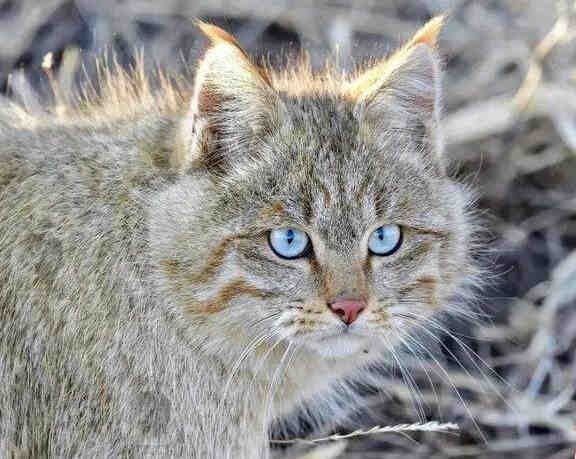
Felis bieti
Felis bieti,Chinese Mountain Cat,Felis chutuchta,Grass cat, grass lynx, wild cat, desert cat, Chetang Xiongbu
The desert cat is called Chinese Mountain Cat in English. It is a unique ani···
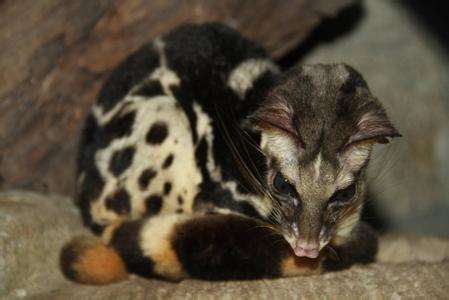
Prionodon pardicolor
Prionodon pardicolor,Spotted Linsang, spotted civet cat, spotted civet cat, oriental civet cat, leopard cat, cunning cat, tiger civet cat
Spotted Linsang, whose foreign name is Spotted Linsang, is a medium-sized ca···

Chrotogale owstoni
Chrotogale owstoni,Owston’s Palm Civet,Barred civet, civet, gossip cat, striped civet, striped civet, Euston palm civet
The Owston’s Palm Civet is a large terrestrial civet with no subspecies. It···

Arctogalidia trivirgata
Arctogalidia trivirgata,Three-striped Palm Civet,Small-toothed palm civet, Small-toothed civet, Three-striped civet
Small-toothed Palm Civet, also known as Small-toothed Palm Civet, has 14 sub···

Binturong
Arctictis binturong,Badger,Panda
There are 9 subspecies of binturong, the second largest species in the famil···

Paradoxurus hermaphroditus
Coconut civet, civet cat, glutinous rice civet
The body of the palm civet is slightly similar to that of the small civet, b···

Ficedula hodgsoni
Dwarf Blue Flycatcher, White-browed Ochre-breasted Flycatcher, White-browed Purple Sand Flycatcher, Flycatcher, Wheat Flycatcher
The body of the Dwarf Blue Flycatcher is very small, about 10 cm; the beak i···
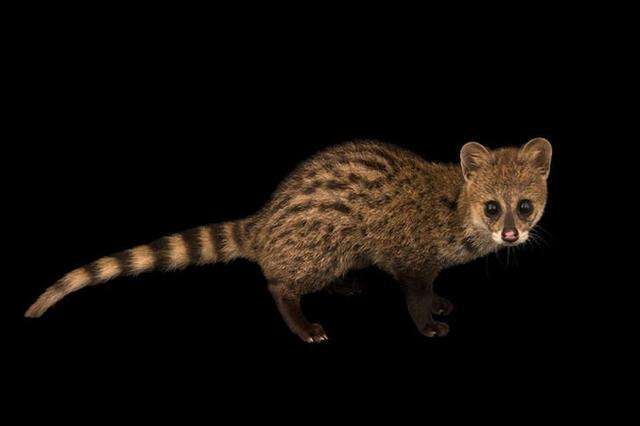
Viverricula indica
Small civet, seven-striped civet, black-footed civet, arrow cat, pen cat, spotted civet, fragrant civet
The small civet is a species of civet that is very similar to the large cive···
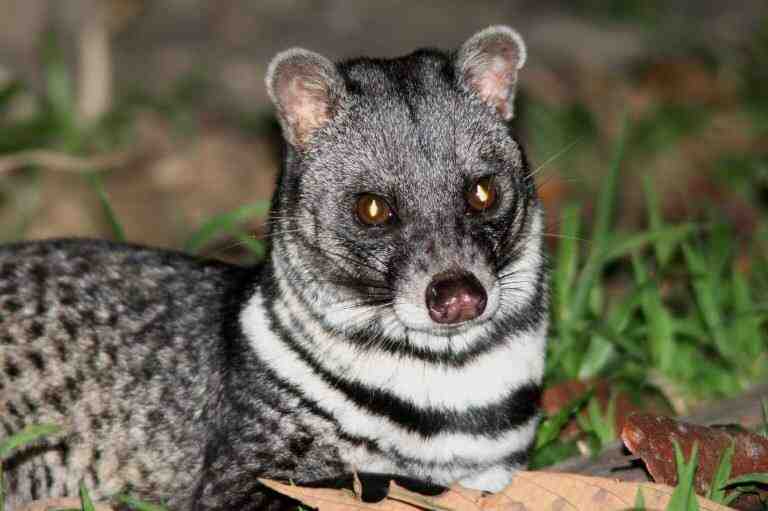
Viverra zibetha
Big civet, Jiujiang civet, Nine-section civet,Large Indian civet
There are 12 subspecies of the civet cat.The civet cat is solitary by nature···
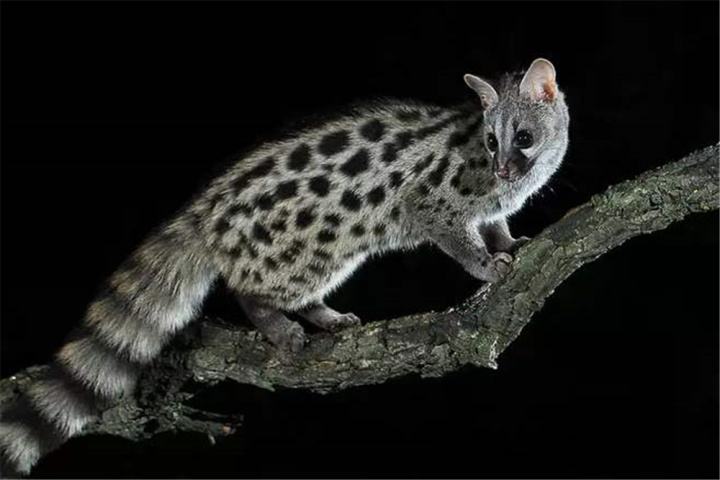
Viverra megaspila
Great Civet,Large spotted civet, spotted civet, stink cat
The Great Spotted Civet has no subspecies and is very similar to the Great C···

Lutrogale perspicillata
smooth otter, Indian otter, saltwater otter, short-haired otter
The smooth-coated otter is an animal of the family Mustelidae and genus Otte···

Clanga clanga
Wu Diao, Hua Diao, Tas, Wu Xiao Ni, Xiao Hua Zao Diao
The black eagle is a national first-class protected animal. Its body is dark···

Aquila verreauxii
Black carving, flower carving, small flower soap carving
The black eagle is a species of the genus Accipitridae. It often inhabits wo···

Ictinaetus malayensis
Forest carving, tree carving, tree eagle
The forest eagle is a medium-sized bird of prey and a Class II protected ani···
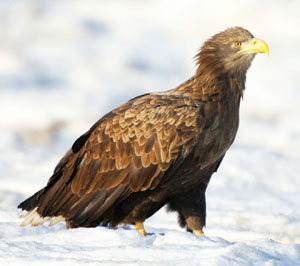
Haliaeetus albicilla
White-tailed sea eagle, white-tailed eagle, yellow-billed eagle, sesame eagle
The white-tailed sea eagle lives at an altitude of 2500-5300 meters. They of···
